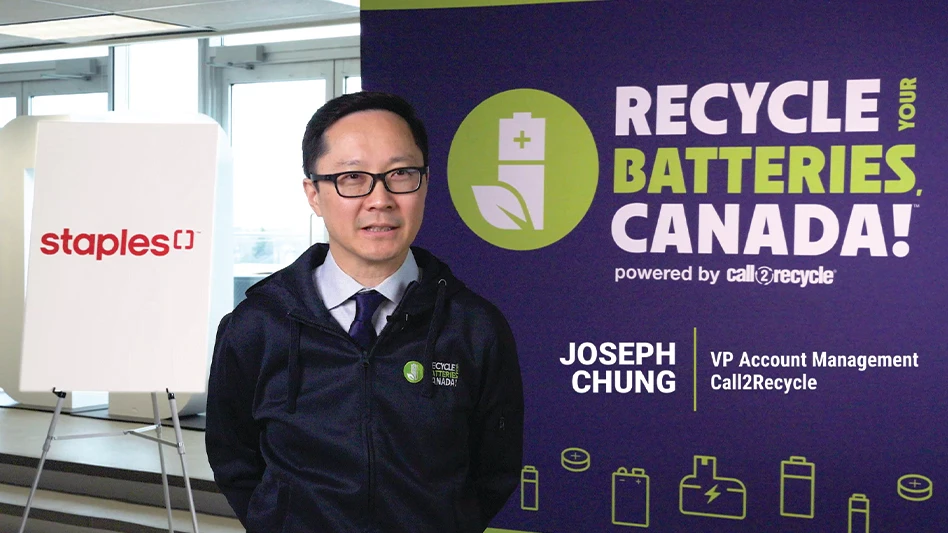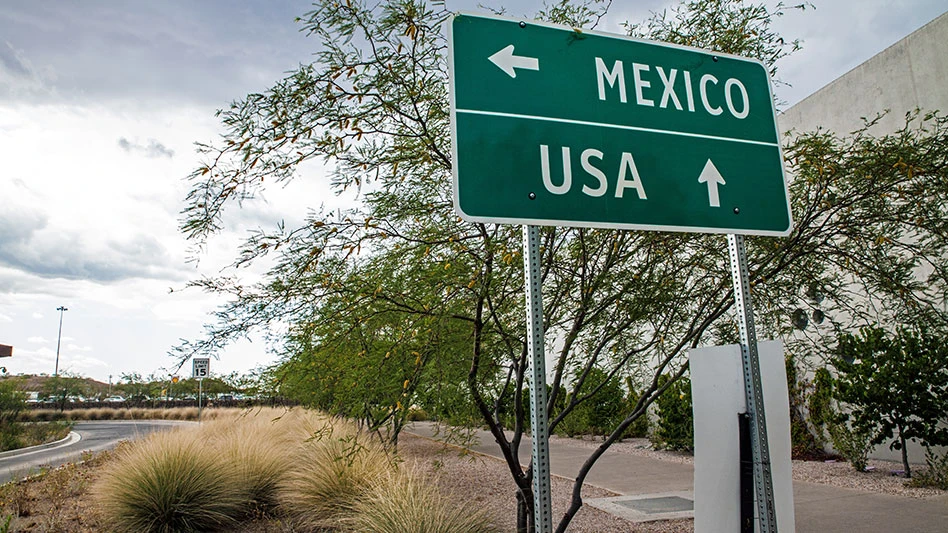The California Department of Resources Recycling and Recovery (CalRecycle) promotes the use of tire-derived products to help reduce the nearly 11 million tires that end up in landfills each year. Throughout the years, CalRecycle has investigated a variety of scrap tire diversion alternatives through its research and market development efforts, and to date projects involving rubberized asphalt concrete (RAC), civil engineering uses, energy recovery, molded rubber products and other tire-derived product applications have been explored. Of these applications, RAC and tire-derived aggregate (TDA) used in civil engineering projects have shown the greatest promise for diverting a significant portion of tires.
WHERE THE RUBBER MEETS THE ROAD
RAC has been used in California for 30 years and is the largest recycled tire application in the state today. Composed of ground tire rubber that is mixed with asphalt and other aggregates, RAC puts 2,000 tires to new use with every paved lane mile. Roads paved with RAC last longer, need fewer repairs, provide better traction and
| RMA Applauds EPA Decision |
| The Rubber Manufacturers Association (RMA), Washington, D.C., has applauded a recent decision by the U.S. Environmental Protection Agency (EPA) that the association says will preserve scrap tire markets. According to the RMA, the EPA’s final rule allows annually generated scrap tires that are removed from vehicles to be used as fuel by an industrial facility. Cement kilns, pulp and paper mills and electric utilities are the major users of tire derived fuel (TDF). In its proposed rule, the EPA recommended that annually generated tires be processed to remove the metal before being considered a fuel under the Clean Air Act. However, that provision would have increased the energy consumption, air emissions and costs associated with delivering TDF to industrial customers without any environmental benefit, according to the RMA. The RMA recognizes that the EPA still requires the processing of whole tires removed from historical scrap tire stockpiles. RMA says it continues to encourage EPA to consider a more expansive definition of processing to allow whole tires to be combusted as tire derived fuel. The association also says it is evaluating the final rule for additional insights and impacts on the tire industry. “EPA clearly listened to the arguments advocated by RMA and other key stakeholders to deliver a rule that ensures continued improvement in scrap tire management efforts in the U.S.,” says Charles Cannon, president and CEO of RMA. “While we are still analyzing several aspects of this final rule,” he adds, “the big picture is that this is a victory for the environment and for RMA’s scrap tire advocacy efforts.” RMA says its efforts helped to influence the EPA’s ruling. The RMA led efforts to promote the use of scrap tires as tire derived fuel, stressed the importance of this key market to the health of the overall all scrap tire marketplace and highlighted the environmental consequences that could arise if scrap tire stockpiles again be allowed to grow. RMA says it coordinated outreach, education and advocacy to the EPA, the Obama administration and the states about the critical role tire derived fuel plays in managing scrap tires, economizing fuel resources and protecting the environment. RMA began its scrap tire efforts in 1990. At that time, it says approximately 11 percent of scrap tires went to end use markets, and 1 billion scrap tires were in stockpiles across the country. Today, fewer than 100 million tires remain in stockpiles and more than 80 percent of scrap tires are used by end markets. More than 50 percent of the scrap tires generated annually are used for TDF. “Scrap tire markets are mature and stable; scrap tires are recognized as a valuable commodity and are used in a number of applications, including tire derived fuel,” Cannon says. “RMA is extremely proud of these accomplishments, thanks to sound state regulations, sustainable, cost-effective markets and steady industry efforts.” -- DeAnne Toto |
reduce noise by up to 85 percent. CalRecycle’s RAC grant program helps cities and counties pave streets with RAC and provides technical assistance to communities interested in using RAC.
While RAC is widely used, and RAC grants have been available for several years, CalRecycle is branching out to promote TDA as an equally beneficial and cost-effective recycled tire product.
A PRIZED LIGHTWEIGHT
TDA is made from shredded tires and can be used for slope stabilization, retaining wall backfill, lightweight embankment fill, vibration mitigation, various landfill applications and more. TDA constitutes the second largest re-use market for scrap tires in California. To promote its use in state highway projects, CalRecycle has partnered with the California Department of Transportation (Caltrans).
Caltrans completed its first TDA project in August 2009 to repair portions of U.S. 101 at Confusion Hill in Mendocino County that were damaged by rockslides and road surface slip-outs. These problems became more frequent as years passed, requiring constant and costly maintenance. Caltrans chose to reroute U.S. 101 to avoid the rock slide area and its related problems.
The proposed route required two new bridges, but the embankment for one bridge had an existing underground drainage structure that could not handle the additional load. Project engineers determined that a lightweight fill material would prevent possible damage to the subsurface drainage. TDA was chosen because of its lightweight properties and cost-effectiveness. The project used approximately 270,000 scrap tires and saved Caltrans an estimated $320,000. Based on the success of this project, Caltrans has accepted TDA as a viable lightweight construction material.
CalRecycle also has partnered with local governments using TDA on landslide highway repair projects in Mendocino, Sonoma and Santa Barbara counties.
A STABILIZING FORCE
Portions of Marina Drive in Mendocino County were constructed on steep terrain vulnerable to landslides, especially during heavy rain. In 2006, saturating rains triggered a landslide that damaged Marina Drive for the fourth time in less than 10 years. As in the past, the road surface slipped a few feet. In the interest of minimizing road closures, county crews would normally add more pavement to make the slipped section even with the original road surface. This proved to exacerbate the problem by adding more weight to the repaired section, making it more likely to slip again in the future. With the latest damage, it became apparent a new, longer lasting repair was necessary.
The traditional technique of repairing a landslide or “slip out” requires excavating unstable material to reach more stable soil, then rebuilding the slope in lifts (compacted layers of soil). Drainage networks are typically added so hydrostatic pressure does not build up behind the fill after rain storms, causing potential instability. With TDA, less excavation is required to achieve the appropriate factor of safety since TDA is much lighter than soil. TDA also is free draining, which means water flows though the backfill material instead of saturating the soil, resulting in a more stable road section. This new design technique resulted in a more cost-effective and permanent way to repair roads that fail because of landslides.
Using TDA to repair Marina Drive saved Mendocino County $740,000 and put 133,000 scrap tires to use.
A DAMPENING EFFECT
CalRecycle also promotes use of TDA in other applications. In 1999, the department commissioned the first field test of TDA as a vibration dampening material under light rail tracks. The result of that test led to the recommendation that the Valley Transit Authority (VTA) use TDA for its Vasona Line light rail extension in Santa Clara County.
VTA built a test section in its San Jose rail yard in 2001 to examine the vibration-dampening effect of TDA. CalRecycle supplied the TDA and monitored construction and testing of this pilot project.
Tests confirmed that the use of a one-foot-thick layer of tire shreds located beneath the sub-ballast, ballast layers and ties of the light rail track section was an effective vibration mitigation measure. Based on these findings, VTA chose to construct four sections of track, more than one-half-mile in length, with the new TDA vibration mitigation underlayment during construction of the Vasona Line extension, which was completed in 2005. An analysis conducted in 2009 showed the sections of track with TDA were still mitigating vibration effectively after four years of operation.
Using TDA along part of the Vasona Line extension diverted 100,000 scrap tires from California landfills and resulted in a savings of $1 million. In a related project, the Bay Area Rapid Transit system will use TDA as a vibration dampening measure as it expands from Fremont toward San Jose over the next seven years, diverting at least 250,000 tires from landfills.
With the experience gained from these successful state and local partnerships, CalRecycle now considers TDA a truly green solution: a cost-effective, reliable alternative to traditional fill materials such as gravel or soil.
More information about TDA use in civil engineering projects is available from the Green Roads website at www.pavinggreenroads.com. CalRecycle is presenting a series of free workshops in April and May 2011 to provide TDA technical information and assistance. Registration information is available by visiting the Green Roads website and clicking on the “Events Calendar” link.
This article was submitted on behalf of the California Department of Resources Recycling and Recovery. www.calrecycle.ca.gov.

Explore the April 2011 Issue
Check out more from this issue and find your next story to read.
Latest from Recycling Today
- Recycled steel price crosses $500 per ton threshold
- Smithers report looks at PCR plastic’s near-term prospects
- Plastics association quantifies US-EU trade dispute impacts
- Nucor expects slimmer profits in early 2025
- CP Group announces new senior vice president
- APR publishes Design Guide in French
- AmSty recorded first sales of PolyRenew Styrene in 2024
- PRE says EU’s plastic recycling industry at a breaking point






